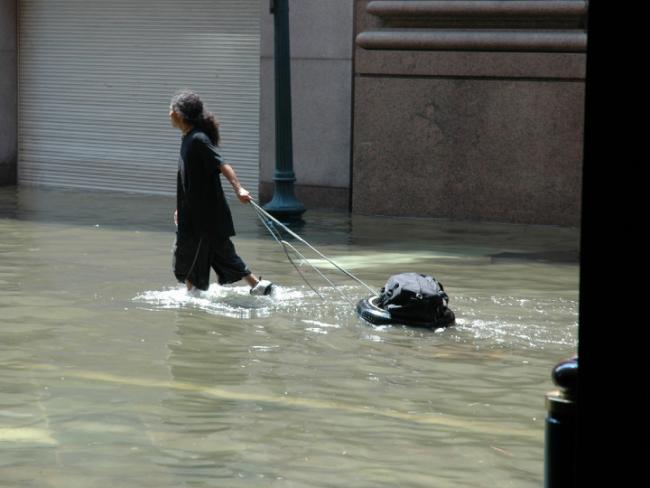Disparity in Disaster Aid Distribution

A panel at the TAMEST Natural Hazards Summit: Responding to and Mitigating the Impacts was dedicated to the problem of inequity in the distribution of aid after a disaster. According to Robert D. Bullard, Ph.D., Distinguished Professor at Texas Southern University, people of color are disproportionately affected by natural hazards. In the book he co-authored, The Wrong Complexion for Protection: How the Government Response to Disaster Endangers African American Communities, he wrote: “that uncovering and eliminating disparate disaster response can mean the difference between life and death for those most vulnerable in disastrous times.”
“Does money follow need?” asked Bullard. “No, money follows money.” With the disparities systemic racism has established ubiquitously in our institutions, Bullard goes on to posit that the minority population will be hit the hardest by climate change just as they are now hit hardest by natural disasters.
Asthma attacks and cardiac arrests disproportionately affect African American men from 46-66 years old. For instance, one of the poorest neighborhoods in Houston is 77012. Flooding from high rains and high winds stir up benzene concentrations in the neighborhood, as it sits next to a refinery. This causes breathing and other health problems for the people living in this particular zip code.
It is perhaps no surprise that this cross-section of Texans is also being hit hardest by the COVID pandemic, as well. “How are African Americans dealing with high positivity rates of COVID-19? Poorly. The group is low for vaccination rates,” said Bullard.
What can be done to combat the health disparities that are seen in our city and our state, then? Within weeks of taking office, President Joe Biden enacted the Justice40 Initiative. This would siphon 40 percent of federal monies for climate and clean energy production to the most vulnerable populations in the United States. That is one way we might start to enact real change, according to Bullard. Then money would truly follow need instead of following the richest and most powerful populations.
Part II of the TAMEST Natural Hazards Summit will take place on May 16, 2022, in Lubbock, Texas. The session, presented by the National Wind Institute (NWI) at Texas Tech University, will take place at Texas Tech University’s International Cultural Center (601 Indiana Avenue, Lubbock, TX 79409).